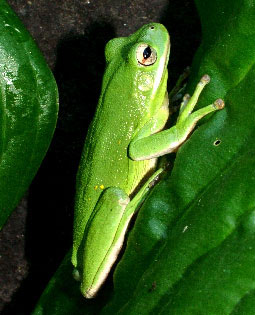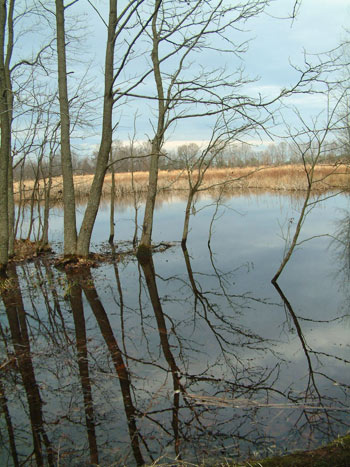Field Guide to Maryland's Frogs and Toads (Order Anura)
Main_Content
Green Treefrog (Hyla cinerea) | 
Adult Green Treefrog, photo courtesy of John White | | Former Name: |
Size:
|
Appearance: |
Habitats:

Photo of Green Treefrog showing large
"adhesive disk" toe pads, courtesy of David Kazyak

Photo of Habitat for Green Treefrog,
courtesy of Rebecca Chalmers |
How to Find: |
Distribution in Maryland: | | For More Information: |
|
